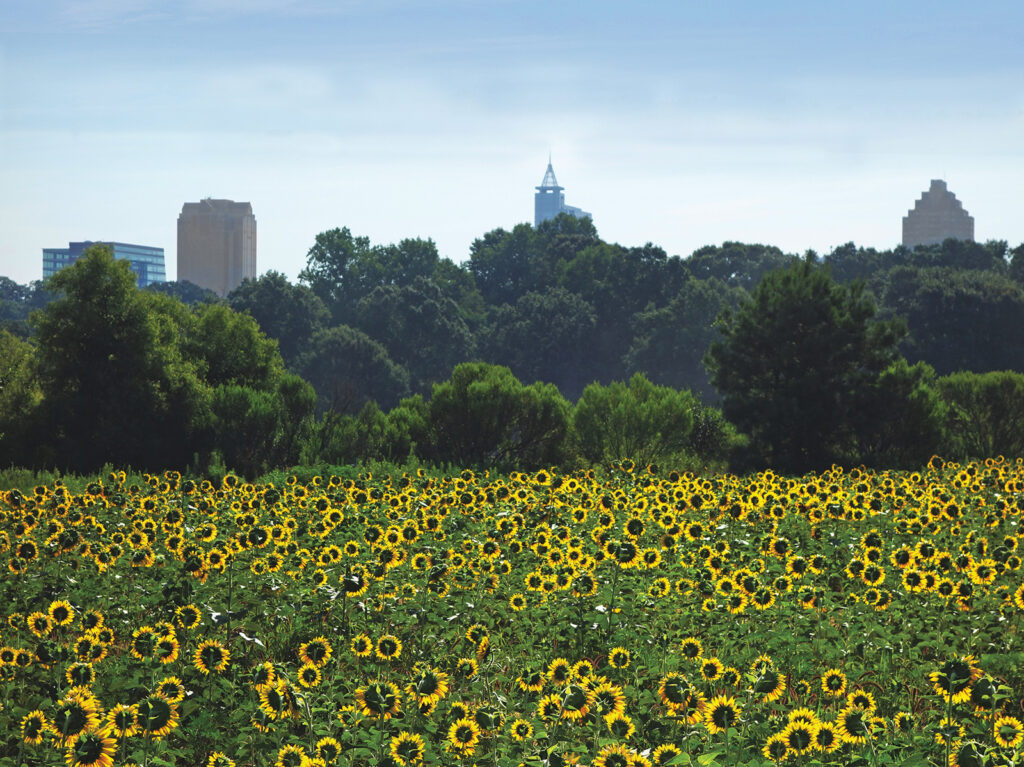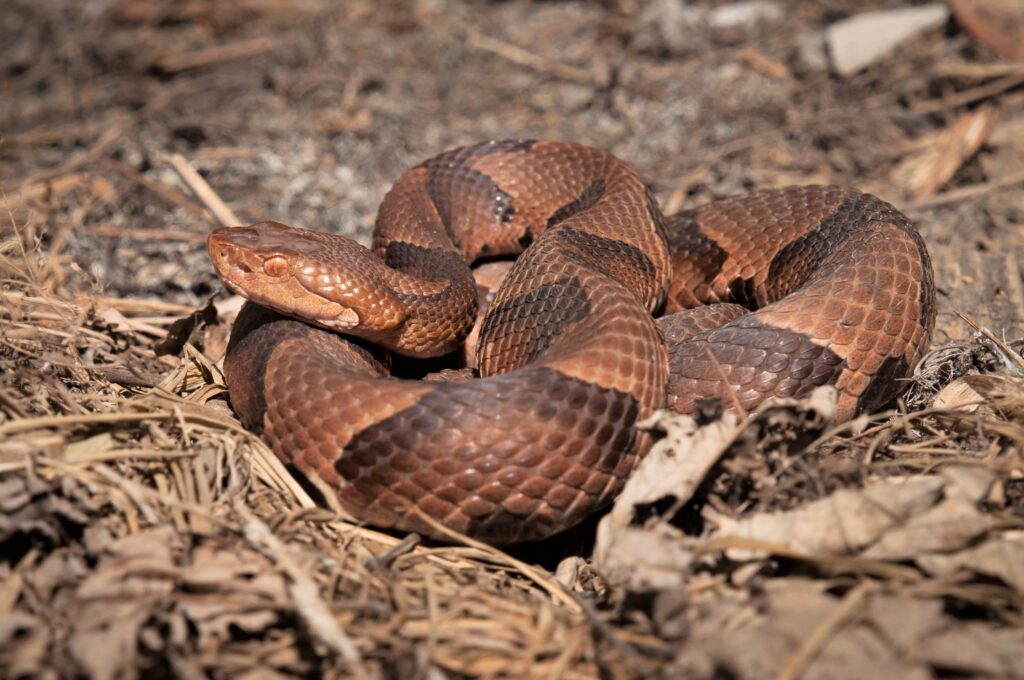Article:
BY ELIZABETH BRIGNAC
The Basics
Welcome to Raleigh! Here is some basic information along with links to help you get started here.
The Piedmont
North Carolina is divided into three regions: the mountains to the west, the Piedmont in the middle, and the coast to the east. The largest cities in North Carolina, including Raleigh and Charlotte, are located in the Piedmont.
Raleigh
Raleigh is the state capital of North Carolina. With an estimated 2024 population of 1,628,789, Raleigh is the second-largest city in the state, and it is growing rapidly. Raleigh was chartered in 1794, the site having been deliberately selected to be the state capital due to its central location. The city is named after Sir Walter Raleigh, an early English explorer who established the first European colony in North Carolina.
Research Triangle Park (RTP)
The Research Triangle refers to the area delineated by the cities of Raleigh and Durham and the town of Chapel Hill, each of which is home to a major university (North Carolina State University, Duke University and The University of North Carolina at Chapel Hill, respectively). In 1959 North Carolina established the area making up the center of this triangle as Research Triangle Park, with the goal of building the economy on the skills of our area’s university graduates rather than losing them to jobs in other states. Today, RTP is home to hundreds of companies on the cutting edge of technological research and development in many different fields. It sits on 7,000 acres of unincorporated space owned and run by the Research Triangle Foundation, a nonprofit organization.
Some helpful websites:
• Raleighnc.gov is the City of Raleigh website where you can pay utility bills, find out about community programs and resources, and contact government agencies.
• Duke Energy: duke-energy.com
• The North Carolina Department of Motor Vehicles:ncdot.gov/dmv
• Raleigh Police Department: raleighnc.gov/police
• Raleigh Fire Department: raleighnc.gov/fire
• Map of Raleigh: maps.raleighnc.gov/iMAPS
• Wake County: wake.gov
• Wake County Public Schools: wcpss.net

Seasons
North Carolina has four seasons and a mostly mild climate—though our summers are on the hot side.
Spring
Spring weather lasts from late February/early March through May. Spring is absolutely beautiful here, with flowers blooming everywhere. The only downside: pollen. Pine pollen covers everything in thick layers of yellow in late March/early April. Other tree pollens emerge in early- to mid-spring, while grass pollens are prevalent later on. If you are prone to allergies, stock up on your preferred medications, and maybe find a good allergist. Then go back outside and enjoy the flowers!
Summer
We have a long summer here. The hot weather usually starts in May and lasts through late September. On the upside: The Triangle is only three hours from the Outer Banks, which offer some of the best beaches in the U.S. To our west, the mountains offer opportunities for whitewater rafting, swimming, camping, hiking and other fun summer activities.
So you are now located a convenient distance to some of the best areas for summer fun in the country. And if you want to stay local, there are plenty of ways to beat the heat. From municipal pools to public splashgrounds, ice cream stands, and several lakes and rivers clean enough to swim in, the Triangle offers plenty of ways to cool off.
There is no denying, however, that summers here become very hot—especially in July and August. We also get a lot of mosquitoes in warm weather, so stock up on bug spray and citronella candles. Finally, we don’t tend to get much severe weather, but if we do, it’s often over the summer—hurricanes can sometimes be a problem, though they are not as severe here as on the coast.
Fall
Fall weather in the Triangle lasts from late September to late November, and it is lovely here. Perhaps it’s not quite the fireworks display of the northeastern U.S., but the leaves do turn beautiful colors, and the temperate weather beckons people outside. We have a lot of fun fall activities on farms throughout Wake County—pumpkin picking, corn mazes, hayrides and similar activities. Drive west into the mountains and you’ll find fresh apples, crisp weather and beautiful leaves.
Winter
Winter here is comparatively short. It starts in December, and by mid-February warmer weather begins to creep in. It used to snow a few times every winter here, but due to the effects of climate change, snow has become a little more rare—we might get one or two snows a year now. And we make the most of them!
Because freezing conditions don’t happen as often or as severely here as they do further north, we don’t have as much of an infrastructure to ease road and sidewalk hazards and other effects of cold weather. So if you are from a northern or midwestern state, you may be bemused at how we react when the temperature dips into the 20s. Alerts! Freeze warnings! School delays! And if it snows or there is an ice storm, prepare for everything to shut down entirely.

Pick a Side!
Most communities divide—genially, but also passionately—on certain local issues. The Triangle is no different. As you acclimate here, find opinions on these subjects so you can hold your own in these conversations.
College Sports (Especially Basketball)
The three big university teams in the Triangle are The University of North Carolina at Chapel Hill Tar Heels, the Duke University Blue Devils and the North Carolina State University Wolfpack.
If you’ve moved here from out of state, you may have followed UNC–Chapel Hill and Duke sports more closely since they both have wider national followings. But in Raleigh and Western Wake, you’re likely to find more Wolfpack fans than fans of either of the other teams, because N.C. State is based in Raleigh.
The merits and records of each team and its players come up a lot in local conversation. Pick a team and don some Wolfpack red or a specific shade of blue—light blue for the Tar Heels or a darker blue for the Blue Devils—during sports seasons. Even if you’re not a sports fan, you might find it helpful to remain at least peripherally aware of what’s going on with these teams, especially in basketball.
Barbecue
North Carolinians love our barbecue, and we have strong opinions about it. Many restaurants around here serve barbecue, so it’s a good idea to go to a few well-regarded places and see what kinds you like.
A major debate topic is eastern- vs. western-style North Carolina barbecue. All North Carolina barbecue is pulled pork barbecue with a vinegar-based sauce, and both the western and eastern types of sauce usually incorporate some pepper.
The main difference is that western-style barbecue (also called Lexington-style because Lexington, North Carolina is famous for this type of barbecue) bases its sauce in ketchup or tomato sauce as well as vinegar, and has a slightly sweeter flavor than eastern-style. Western-style North Carolina barbecue often uses only the pork shoulder. Eastern-style North Carolina barbecue, on the other hand, is sometimes called “whole hog” barbecue because it uses most parts of the pig. It emphasizes vinegar and spices, but uses no tomato in its sauce.
Because of Wake County’s central location, many of our barbecue restaurants are influenced by both styles of barbecue, and many also offer both types of sauce—though some focus on one type only.

The Raleigh Greenway System
One of the most-loved and best-used resources in the Raleigh area is our extensive greenway system. Raleigh has over 100 miles of interconnected greenways, and our system connects to other greenways throughout the Triangle. Bikers and hikers can use this system to travel from one end of the Triangle to the other.
Raleigh’s greenway system consists of 28 trails, many of which pass near rivers, lakes and other scenic natural features. The longest of these include:
The Crabtree Creek Trail, which begins at Anderson Point Park near exit 15 off I-440 and follows Crabtree Creek northwest for 15.9 miles.
The Neuse River Trail, which starts at Falls Lake Dam and follows the Neuse River south for 27.5 miles, ending at the Wake/Johnston county line. (This trail is part of the North Carolina Mountains-to-Sea Trail, which takes hikers from one end of the state to the other.)
The Walnut Creek Trail, which starts at Lake Johnson Park and extends for 15 miles across southern Raleigh to connect with the Neuse River Trail.
You can find a full greenway system map and descriptions of individual trails here: raleighnc.gov/find-a-trail.
Gardening
Gardening is a favorite pastime of many Triangle residents. Raleigh is in a USDA Plant Hardiness zone of 8a. (It used to be 7b, but it was changed to 8a in 2023.) This matters because it affects which plants can survive the winter cold, which goes down to an average low of 10–15 degrees Fahrenheit.
A few resources you might find helpful as you get started:
• NC State Extension: A resource that seeks to extend university research to benefit state residents. The organization offers invaluable gardening expertise— all kinds of information about when to plant, what to plant, which plants are native to this area, common local pests, how to encourage pollinators and almost anything else you can think to ask. They will even test your soil! Go to gardening.ces.ncsu.edu to learn more.
• The North Carolina Botanical Garden in Chapel Hill offers research resources and classes for Triangle gardeners. Go to ncbg.unc.edu to learn more.
• Keep an eye on Talk of the Triangle, our online-only content page. We offer bimonthly posts from our gardening expert on how to care for your garden during each season. midtownmag.com/talk-of-the-triangle.
• Here is a good vegetable garden planting calendar: content.ces.ncsu.edu/central-north-carolina-planting-calendar-for-annual-vegetables-fruits-and-herbs.
• For people with limited space, here is a good calendar for planting container vegetable gardens: content.ces.ncsu.edu/container-garden-planting-calendar-for-edibles-in-the-piedmont.

Look Out for These Critters
We have some amazing wildlife here—everything from racoons to rat snakes—and most of it is fascinating to watch and not a threat. But like all wildlife, some of it presents dangers. Here are some animals you want to enjoy from a distance (or not at all) in our area.
Spiders
Most spiders in the Triangle are nonvenomous, but the following two are poisonous. Neither is aggressive—they only bite defensively. If you suspect you have been bitten by either of these spiders, contact a doctor or poison control center immediately.
Female black widow: A medium-sized spider with a large, round abdomen. It is shiny and black with a red, hourglass-shaped mark on its underside. Its venom is potent. (Male black widows are not considered dangerous to humans.) Black widows tend to be active at night, and prefer hidden corners and crevices.
Brown recluse: A small spider—about half an inch in size—that can be found in attics, basements, garages, under houses, and in similarly hidden spaces. Bites can sometimes cause the skin around the bite to form necrotic lesions.
Copperhead Snakes
We get a lot of copperheads around here. Copperhead season lasts from spring through fall. Because of their coloring, copperheads can be very hard to spot. If you’re in the woods, or even just in your yard, it’s a good idea to wear shoes and keep an eye out for them—especially in areas with trees, weeds or undergrowth.
Copperheads are medium-sized snakes with copper-brown bodies; dark, hourglass-shaped markings; and distinctive, triangular-shaped heads. If you see a copperhead, don’t attack it—just avoid it. Copperheads usually won’t bother you if you don’t bother them. Even if the snake is just a baby, stay away. Baby copperheads are dangerous, despite their size, because they cannot control how much venom they release.
If you are bitten, contact a doctor immediately. Copperhead bites are seldom fatal if treated properly.
Ticks
Most places have ticks, but North Carolina has the dubious distinction of routinely reporting the world’s highest rates of Rocky Mountain spotted fever (RMSF, a potentially deadly tick-borne disease). Twenty percent of all RMSF cases have been contracted in North Carolina. Lyme disease is common here as well.
You can prevent these diseases by using permethrin on your clothes before camping or hiking, using an insect repellent with at least 20% of an active ingredient like DEET on your body and clothes, and most importantly, checking your body and removing ticks after spending time outdoors. The sooner you remove a tick, the less likely you are to contract a disease from it.

Schools
Educational options here are plentiful—and complex. Check out our education guide (located on page 80 of this issue) to help guide you through the education landscape here.
Shopping
If you need furniture or supplies for your new home—or just want a break from unpacking— here are some shopping areas you might want to investigate.
North Hills: This walkable shopping area combines recreational boutique shopping and the area’s largest independent bookstore with the practicality of Target and the adventurous spirit of REI. There’s something for everyone.
Vilage District: Formerly called Cameron Village, this area has a vintage feel, having been open since 1949. It combines fun dining spots with local galleries, furniture stores, and Tin Roof Teas, Raleigh’s well-loved local tea store.
Triangle Town Center: This drivable, outdoor shopping area contains both practical stores and upscale shopping opportunities. The only Saks Fifth Avenue store in North Carolina is located here.
Crabtree: This thriving shopping area has everything from an Apple store to mall necessities like Bath & Body Works and department stores, along with some fun local businesses like Sweet Tea and Cornbread NC. It has some good restaurants, too—and don’t forget the Lego Store!
Brier Creek Commons: Located where Durham, Research Triangle Park and Raleigh meet, this sprawling, drivable shopping area has many practical stores. This is where you go to pick up kids’ outfits for school, a throw rug for the hall, craft supplies, drill bits and drywall screws, and maybe some lunch.
Lafayette Village: This shopping district in North Raleigh offers high-end boutique shopping with many restaurants and local stores. Community events are often held in the central lawn area.
Traffic
You will find that, while drivers here are not generally aggressive, the constant road construction that comes with Raleigh’s rapid growth can create headaches. Unlike in many cities, rush hour here gets crowded in the morning with people leaving the city (driving west to their jobs in Research Triangle Park) and becomes crowded with people returning to the city in the afternoons.
Interstate 40 is a major interstate that runs east-west through the southern part of Raleigh.
Interstate 440, also called the beltline, is a crescent-shaped, 16-mile road that hooks up at both ends with I-40. Originally, the two roads formed a circle around the city, but Raleigh has since grown out far past the beltline. The area north of the beltline is generally referred to as North Raleigh (an informal designation—North Raleigh is not a separate city). Raleigh’s older neighborhoods mostly lie south of the beltline.
Interstate 540/N.C, Highway 540 has been in development since 1992 with the ultimate goal of creating a 70-mile outer beltline to encircle the expanded city of Raleigh. Currently, 540 forms a crescent around the city, starting in Cary, southwest of Raleigh, and extending north, east and southeast of Raleigh, where it ends in Knightdale. The Complete 540 project is currently under construction to finish the southern section of 540 and complete the circle, and is projected to be completed in 2028. Portions of 540 require tolls.
Fayetteville Street runs through downtown Raleigh from the convention center to the state capitol. Many of Raleigh’s oldest public and municipal buildings are on or near Fayetteville Street.
Wade Avenue is a major road running through the western part of Raleigh. It passes near the North Carolina Museum of Art and the Village District, a popular outdoor shopping area.
Glenwood Avenue extends from downtown Raleigh northwest into Durham. The portion of the road near downtown Raleigh is home to much of Raleigh’s nightlife.
Capital Boulevard is a major road running from downtown Raleigh through North Raleigh. South of the beltline, Capital Boulevard runs through a warehouse district. North of the beltline, many practical, day-to-day businesses line Capital Boulevard.
New Bern Avenue is a major road running from downtown Raleigh through eastern Raleigh.
Also
• Please check out the article Discovering Raleigh on page 60 in this issue on the first things to do after moving to Raleigh. This article will introduce you to some of the best activities your new home has to offer.
• We North Carolinians love our festivals. Here is a link to some of our most popular local and regional festivals: midtownmag.com/north-carolina-festivals.
Check out more from around the Triangle at midtownmag.com.



